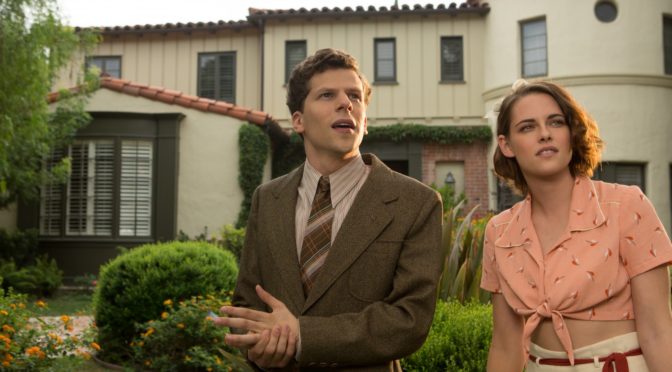Set on a drilling base at the bottom of the Mariana Trench, Underwater follows a crew of workers when something goes terribly wrong. Norah (Kristen Stewart; Personal Shopper) is a mechanical engineer that narrowly escapes a collapsing wing of the base and informs the others of the catastrophic damage. It appears that an earthquake has destroyed most of their base and its crew. As Norah and the others attempt to escape, they encounter anomalies that suggest they may not be alone on the ocean floor. The film is the first studio feature of William Eubank (Love), an indie sci-fi director, and he carries much of his style into the project.
Eubank is adept at creating tension. It’s immediately obvious that several of the crew are going to die, the questions are who, how, and when and Eubank keeps this guessing game interesting. Some deaths are predictable when characters venture away from the group, but other deaths can be swift and unexpected. There are plenty of jump scares, but few that feel cheap. There are moments of levity used to break the tension with T.J. Miller (Cloverfield) making sarcastic jokes in precarious situations, but these aren’t as annoying as they initially appear. Miller serves as an audience surrogate, pointing out the insurmountable danger they face that films often ignore. His jokes are usually only worth a chuckle, but they’re not to the film’s detriment.

The film boasts impressive visual effects. The sets have the unadorned look of an oil rig rather than a high-tech sterile environment and it adds to the realism, particularly when portions of the base collapse. Eubank uses the same contrasting speed-up / slow-down effect from his earlier films during explosive scenes to capture the power of the blasts and it provides some needed style. There are also interesting designs like the pressurized suits the crew wears to traverse the ocean. The suits could easily be mistaken for mech suits with their intricate, almost modular appearance. The designs of the sea creatures are mostly standard, but their quick movements and glowing eyes are frightening enough. The best design is revealed towards the end when the film shows it still has a secret up its sleeve and is able to create a unexpected, but truly awe-inducing moment.
While the direction may be strong, it’s impossible to ignore the script’s unoriginality. The film is a cross between Alien, The Abyss, and The Descent with little original plot to add. It has the same blue-collar cast as Alien, the setting of The Abyss, and the creatures and claustrophobia of The Descent. The main crew has little development and the film seems more interested in its set pieces than its characters. Surprisingly, this was a beneficial choice. The lack of character focus allows the film’s strongest features, it’s visuals and direction, to shine. In the few moments when relationships and backstories are emphasized, the cast struggles with the lackluster script and do the film a disservice. It’s story is completely familiar but the film’s tense direction and visual flair are enough to make it an enjoyable ride.

3/5 stars.







